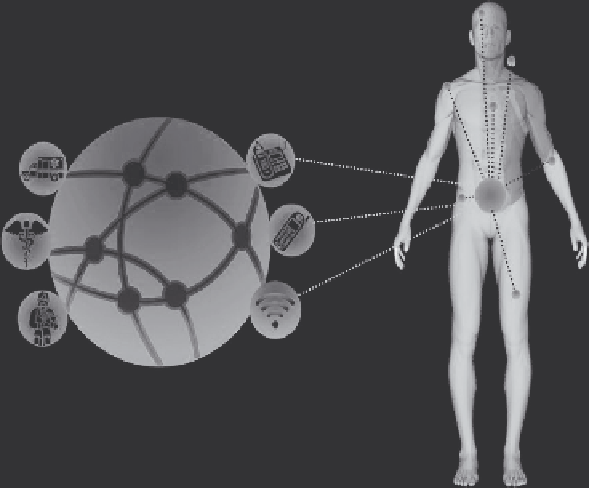Biomedical Engineering Reference
In-Depth Information
EEG
DNA/proteins
Movement and
positioning
ECG
PSTN/ISDN
Glucose/
Blood pressure
Emergency
health services
GPRS/UMTS
To xins
Electronic
patient record
WiFi
Implants
Medical call
center/medical
professionals
FIGURE 12.1
Scheme drawn and adapted from Imec's Human++. (From
www.imec.be
.)
handle all the signals. What we see happening is, in a sense, an alliance
between actors pushing imminent and projected changes in health care, and
actors offering promises about functionalities of new technologies. There are
lots of open issues, at the side of health care as well as of new technologies
and the coevolution of the two.
The other important consideration is that the present “alliance” (at least
in the Netherlands) focuses almost exclusively on wonderful new opportu-
nities, and might well overlook other aspects and dynamics. That is why
approaches introducing further interactions and interventions are impor-
tant to broaden perspectives of the various stakeholders and allow them to
develop better strategies. In particular, present and new roles and respon-
sibilities should be addressed because these can hamper developments but
also offer openings. For instance, if a private company offers home-care
monitoring, what quality assurance is possible? What will be the role of the
government and regulatory actors in ensuring quality and availability of
care and ensuring the safety of patients? What liability issues will emerge,
for instance if a patient comes to harm because of miscommunication or fail-
ure of device, or when an actual emergency situation is not part of the pres-
ent software? Another cluster of issues relates to reimbursement: who will
carry the costs of the new systems (their putting into place and the actual
monitoring)? The structure of the health insurance system is important here,

